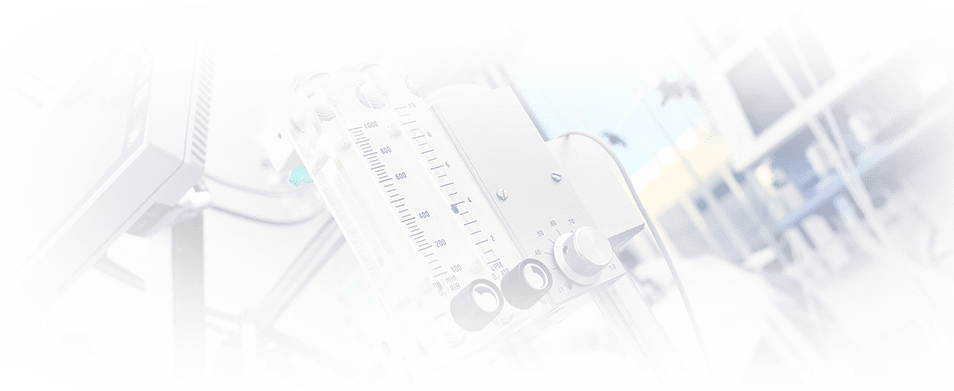Cough-like attacks
Analysis of the clinical case presented by
Murzina Oksana Yurievna,
Pediatrician of the highest category of JSC "Medicine" (Clinic of Academician Roitberg), member of the Union of Pediatricians of Russia
Going to the clinic with complaints of sudden attacks, very similar to a barking cough.
Accompanying documents
Central Clinical Hospital of the Presidential Administration of the Russian Federation, Pediatric Psychoneurological Department, September 2018
-
Adolescent conversion disorder. Hyperventilation syndrome.
-
Recommended: consultation with a psychiatrist and urologist.
-
Zoloft 0.05 g, 1 tablet in the morning, for a long time.
FGAOU VO First MGMU im. N.M. Sechenov, Ministry of Health of Russia (Sechenov University), University Children's Clinical Hospital, treatment and diagnostic department, October 2018
-
Complaints of attacks of paroxysmal cough with inspiratory dyspnea, panic elements, hyperventilation syndrome and subsequent post-hypoxic peripheral paresis of the foot, numbness of the toes and toes on the left, numbness of the tongue.
-
Diagnosis: peripheral flaccid paresis of the left foot. It is necessary to differentiate the child's condition in the group of coagulopathies, thrombocytopathies with antiphospholipid syndrome.
-
It is recommended to continue taking Zoloft 0.05 g, 1 tablet in the morning, for a long time
The results of the survey are presented
Complete blood count is the norm.
General urine analysis is the norm.
Research for enterobiasis - pinworm eggs were not found, protozoa were not found, helminth eggs were not found.
MRI of the brain - no pathology was found.
ENMG (the peroneal, tibial, medial plantar and sural nerves on the left were examined.
Defeats of motor fibers with signs of demyelination (compression?) In the area of the fibular head (fibular canal) and axonal lesions in the distal region were revealed. Attention is drawn to the increase in residual latency during stimulation of the left peroneal nerve, which does not allow to exclude this in the foot area.
When examining the left tibial nerve, an increase in residual latency is noted, which does not allow to exclude the compression of this nerve in the ankle joint (tarsal canal).
Against this background, attention is drawn to the lesion of the sensory fibers of the investigated nerves by the type of myeliopathy.
When contacting the clinic of JSC "Medicine"
When examined by a pediatrician - an attack of "coughing", with a transition to hyperventilation with loss of consciousness.
Calling the ambulance team followed by hospitalization in the clinic.
Anamnesis supplement
The first manifestation of the disease in November 2017
In May 2018, an attack of prolonged spastic cough-like movements with loss of consciousness first appeared.
Hospitalization in intensive care.
Therapy: relanium, preznisolone (according to the mother in large doses), oxygen therapy.
After the attack - there was a violation of sensitivity in the upper and lower extremities, everything went away on its own.
Additional examination was carried out: MRI of the brain, EEG monitoring (6 hours), Holter monitoring, CT of the chest, laryngoscopy was performed, adrenal tumor was excluded.
Diagnosis: psychogenic cough.
After discharge from the hospital, the attacks were repeated every 3-4 days, accompanied by loss of consciousness.
In the post-attack period - severe headache and sensory disturbances in the lower and upper extremities of various localization and severity.
Upon admission to the hospital of JSC "Medicine"
Moderate condition, asthenic physique, moderate nutrition.
The skin is of normal color and moisture, elastic, no rash.
Lymph nodes are not palpable.
Consciousness is clear, oriented in time, personality and space.
Emotionally labile, contact, alarming, demonstrative behavior.
There are no meningeal signs.
There is weakness in the proximal and distal parts of the left leg.
Musculoskeletal system without visible pathology.
Pain sensitivity is reduced in the left foot, mosaic in the lower leg and thigh, in the left hand and mosaic in the forearm.
Neurologist's consultation
On examination, the patient complains of numbness in the distal parts of the left foot, which was preceded by a feeling of weakness in the left leg and the inability to walk independently without support. Weakness in the leg arose after another attack characteristic of the patient, a similar one repeated 2 times on the day of the consultation.
Attacks appear suddenly without any precursors, barking phonation ("dog barking" according to the patient), then there is an extension of the trunk and neck or repeated tilting of the trunk with a feeling of lack of breathing and episodic loss of consciousness, a feeling of numbness in the left extremities, lasting from several minutes up to several hours.
There is an episodic loss of speech from whispering to aphonia, lasting up to 2 weeks. The patient reports a feeling of numbness in the tongue and around the mouth, accompanied by difficulty in pronouncing words. After an attack, diffuse compressive headaches are noted. Examination: no pathology was revealed; polysomnography and daytime EEG - no signs of epileptic activity were found. On examination, a 2-sided Chvostek syndrome, a diffuse decrease in deep reflexes in the hands, and lively tendon reflexes on the legs are revealed. The patient presents with separate zones of painful hyposthesia in the left leg, complete anesthesia in the anterior half of the left foot, weakness in the proximal and distal parts of the left leg. At the same time, standing and walking are not disturbed.
Given the nature of the attack and other disorders in the form of transient numbness, weakness, aphonia, as well as the absence of CNS pathology during instrumental examination and the presence of a traumatic situation, it can be assumed that there is a conversion, hyperventilation syndrome, motor, dysphagic disorders. A course of psychotherapy is recommended.
Psychologist consultation
According to the diagnostic indicators, as well as conversations and observations, it can be assumed that the girl experienced a traumatic situation earlier, the emphasis in the conversation shifts to significant adults, especially the father. During the conversation, there is "resistance", leaving or shifting from one's personality to the personality of the father, many suppressed emotions, which are accompanied by somatic manifestations when "leaving": redness of the skin, tearfulness, etc. Resistance is also observed when performing a certain task, for example, drawing a family : there is an aggressive state, protest, negativism, tearfulness and, ultimately, the recognition that not a single family member is able to draw. The drawing, aimed at determining psychological separation, showed that the girl has a symbiotic relationship with her mother, in this case, can be considered as a regressive state - going into a child's state, as a compensatory mechanism that works in response to stress (?). Withdrawal to fantasy, turning inward, high level of frustration, emotional lability, tendency to hypothymia, tension, anxiety, neurotic, suppressed aggressive and hostile tendencies. Drawing of the family as an area of conflict. Also, the girl is going through puberty, during which she experiences increased physical and mental stress, since the unconscious side of the personality requires separation from the family and restructuring of relationships with significant adults.
Joint discussion
The patient remains unclear. An assumption was made about the presence of a mental illness. This is most likely one of the components of the clinical picture, but it does not seem to be the main diagnosis.
The patient now has another attack, was transferred to intensive care, clinical convulsions with an interval of several minutes, repeated.
According to the description of the mother and the attending physicians who observed the attack 2 days before this joint discussion, after the attack, numbness occurs in the left foot and left hand, as well as the tongue and circular muscles of the face.
During the examination, which was carried out earlier, the sensitivity is impaired as a "sock", on the lower leg mosaic disturbance of sensitivity. The patient was examined in detail.
From the anamnesis it is known that every year he travels to Karelia, and at the dacha where the girl was staying, ticks were found in pets.
Relief of an attack
Sol. Relanii 5 mg / ml-2.0 (1 ampoule), total dose 10 mg.
Prednisolone 60 mg.
Surveys performed
UAC 03.10.18:
-
reticulocytosis 28 ppm;
-
ESR 1 mm / hour.
B / X blood 03.10.18: CRP - 0.18; Aslo 27; rheumatic factor - 5.5.
A smear on streptococcus from the throat - negative.
Antibodies to nuclear antigen vir. Epstein-Barr IgG 212.8.
Antibodies to cytomegalovirus (IgG) 202.50.
Antibodies to cytomegalovirus (IgM) 1.36.
Antibodies to phospholipids are normal.
Additional examinations
Densitometry 10/05/18 - bone density is normal.
PCR of urine, saliva to CMV - not detected
PCR of blood to CMV - not detected.
UAC 05.10.18. - without pathology
K, Na is normal; urea 2.4; APTT - 44 p.
Blood on LE cells negative.
EEG 05.10.18 - focal and paroxysmal pathological activity throughout the recording was not detected.
ECG 05.10.18 - sinus rhythm, normosystole. The vertical position of the electrical axis of the heart. The absence of an increase in R from V1 to V3 is more likely of a positional nature. Minor nonspecific changes in the repolarization of the left ventricular myocardium.
ENMG 06.10.18 - according to the results obtained, signs of moderate radicular interest at the C6 - Th1 level are determined. As well as signs of mild cubital canal syndrome on the left. According to the results of the study, signs of radicular interest at the L5 level on the right are determined.
PCR herpes type 6 - detected.
MRI 10/08/18 - on the basis of the MR picture data for pathological changes in the brain were not obtained. Ventriculoasymmetry. Minimal synovitis of the atlantoaxillary joint. MR picture of asymmetry of the lumens of the intracranial parts of the vertebral arteries D<S. The Willis circle is closed. No data were obtained for the presence of hemodynamically significant stenoses, arteriovenous malformations of intracranial arteries.
PCR herpes 1, 2 types - not detected.
Total calcium, magnesium, potassium, sodium are normal.
Coagulogram 10/07/18 - thrombin time 18 s, APTT - 40 s.
Oculist 08.10.18 - OU - emmetropia. OS - scotomas in sight.
Edema of the optic disc, narrowing of the boundaries of the visual fields was not detected.
Sowing from the throat - streptococcus viridas 10 × 4.
Joint discussion
The patient's condition is the same. Despite the treatment with large doses of dexamethasone, on the 4th day of the quiet period, another attack occurred, according to the doctors' description, it lasted about 15 minutes. It is difficult to say whether the patient was completely unconscious at this moment, there was a sinking of the eyeballs, and did not react to the call. Because pulse therapy was carried out, the patient has a slight nausea, it was decided to gradually decrease dexamethasone.
The diagnostic concept is currently the same.
It is recommended to discuss the previously conducted encephalograms, taking into account the expected affected area.
Due to the need for video monitoring of the patient, anticonvulsants will be canceled for a while.
A study will be carried out 2 days after the cancellation.
At the mother's request, a neurogenetic consultation will be held.
The patient was diagnosed with herpes type 6 by PCR in the blood. It is not known whether it has any significance in the development of this disease, however, due to its potential danger, incl. in relation to demyelinating processes, it is recommended to carry out antiviral therapy.
In addition, if possible, review the MRI - is it possible to interpret the identified changes in the form of tortuosity, etc. as manifestations of meningitis.
The first manifestation of the disease was in November 2017, when, after suffering a sore throat, she noted bouts of "barking" cough, which passed within a month.
In January and April 2018 - two sore throats followed by bouts of "barking" cough, which disappeared within a few weeks after the disease.
The patient was admitted with a worsening condition. Clonic convulsions recur, continuously, often recur. The light interval without seizures lasted 2 days. When comparing the anamnestic data, it can be stated that the disease began several years ago.
At this time, the patient had 12 fractures. When analyzing the nature of the trauma, it was revealed that they are not associated with extreme sports. In addition, all 12 injuries were not painful; the patient learned about the injury by edema, deterioration of the function of the affected organ and after radiography. The patient's bones are not changed, there is no osteoporosis. On examination, there is a loss of sensitivity in the shape of a short sock, then there is a gap of good sensitivity, then again a loss of sensitivity, etc. A snapshot was taken showing the dropout zones. So there is a mosaic picture of polyneuropathy. Apparently, the injuries occurred as a result of a violation of muscle innervation and loss of synchronization of movements in a patient with polyneuropathy. The cause of polyneuropathy is not entirely clear. Considering that the grandmother is being seen by a neurologist for polyneuropathy of unknown genesis, a congenital nature of polyneuropathy was suspected. This diagnosis is highly doubtful, because there are no associated genetic defects (deafness, loss of vision, mental retardation, etc.). So we can say that there may be a genetic component, but the main pathogenetic mechanism is acquired - probably of infectious-rheumatic genesis. There is no connection with any infections (Lyme disease, borreliosis, etc.).
The presence of seizures cannot be explained by peripheral polyneuropathy and is a manifestation of a central lesion. Most likely, we are talking about the transferred vasculitis, which is now being treated with small doses of hormones with the transition to anti-inflammatory therapy.
It is necessary:
1.Consultation of a pediatric epileptologist;
2. to intensify anticonvulsant therapy, given the deterioration;
3. It is also noteworthy that the cessation of seizures for 2 days coincides with the beginning of dexamethasone at a dose of 32 mg, and the deterioration coincided in time with a significant dose reduction. This situation is not entirely clear, but it is recommended to return to a dose of 32 mg, and to carry out further reduction very carefully.
As noted earlier, the psychogenic factor may exist, but it is supporting and enhancing the clinical picture, but is unlikely to be the main one. Chronologically, the deterioration of the condition coincided with the onset of menses, but there is hardly a direct connection either.
The background is also connective tissue dysplasia: the shape of the neck, increased mobility of the joints, easily does twine. Echocardiography shows no evidence of pronounced prolapse.
Yesterday the girl had a seizure lasting about 2 hours. This aggravation arose against the background of complete health, although a severe headache had developed some time before. Today the patient has a slight headache, which she considers familiar to herself.
The patient notes episodes of an increase in blood pressure to 200, however, the monitoring of blood pressure at the Research Institute of Pediatrics registered stable systolic and labile diastolic hypotension.
On examination, there is a mosaic loss of sensitivity of the lower extremities, ankles in the form of a low toe, then in the popliteal region on both sides. Apparently, this can explain the repeated fractures, more of the lower limbs, as well as the arms, which occur against the background of physical activity usual for a teenager. The patient has a small systolic murmur at the apex, in other departments it is not performed.
The last period of deterioration began a week ago and coincided with the first day of the menstrual cycle, but a clearer connection with other episodes of the menstrual cycle cannot be found.
Speaking of the syndromic approach, the patient has polyneuropathy, widespread, the nature of which requires further study, but does not get the impression of a hereditary nature. It is also not possible to fully explain this, since the nature of yesterday's attack in the form of clonic seizures must have an explanation.
The patient suffers from quite severe angina, antibiotic therapy is performed. Tonsiloectomy was not offered. In this regard, the therapy prescribed yesterday is being carried out.
An ENT consultation is routinely required to determine the feasibility of tonsillectomy.
Changes in the ECG, which were found in the Research Institute of Pediatrics, also speak for rheumatic attack: episodes of pacemaker migration, transient AV block, constant 1-degree AB blockade at night.
As for the psychogenic explanation, this diagnosis can be considered as a component of the formation of the syndrome, but not the main cause. When forming, connective tissue dysplasia should also be exposed.
She also draws attention to the fact that the patient's grandmother suffers from polyneuropathy, is treated in our clinic, it is desirable to clarify the nature of the disease, how it manifests itself, etc.
Additional examination will include - calcium, magnesium, as well as the virus carrier for herpes. The question of the appointment of antiviral therapy must be resolved.
In therapy: reduce the dose of dexamethasone by 2 times, then a slow decrease with a simultaneous switch to NSAIDs. Add Mexidol to therapy. The etiological reasons for this patient are not clear. There is still the question of rheumatic lesions, they took the reaction to borreliosis, draws attention to CMV and M and G.
Apparently, it is necessary to treat cytomegalovirus infection, as well as to prevent re-infection - compliance with a sanitary regime when dealing with pets.
The patient is transferred to the ward.
Repeated consultation in a specialized center
Carry out diagnostics: EEG video monitoring for 24 hours, the estimated affected area is the deep temporal region.
It is recommended to discuss the previously conducted encephalograms, taking into account the expected affected area.
Due to the need for video monitoring, the patient will be canceled for the time being anticonvulsants - a study will be carried out 2 days after the cancellation.
At the mother's request, a neurogenetic consultation will be held.
Additional examination
AT to tick-borne encephalitis virus IsG 0.05l less than 0.168 norm
AT to tick-borne encephalitis virus IgM 0.094 - the norm.
RA with parapertussis diagnostics - l: 20.
B / x blood 10/12/18 - ALAT 47.5; glucose (serum blood) 6.7.
Infectionist - DZ is unclear, it is necessary to exclude fungal infection.
Vitamin B1 - 1.98 ng / ml; B6 is normal.
Repeated consultation based on the results of the survey
Given the clinical and anamnestic data, it is not excluded autoimmune damage to the central nervous system (BikerStaff's stem encephalitis, encephilitis with antibodies to glutamate and neuronal receptors).
Recommended - to clarify the diagnosis, needle ENMG (89035764399), determination of antibodies to glutamate and neuronal antigens (Invitro) + GAT + pelvic ultrasound (with vaginal probe).
In therapy - immunocorrective therapy with confirmation of the diagnosis: methylprednisolone (solomidrol) 1 g per day No. 5 + high-dose intravenous immunoglobulin (homunex, aktogam, prividzhen) 2 g / kg course dose (per course) for 5 injections.
Additional examinations
Electroneuromyography. The conducting function of the motor and sensory fibers of the nerves of the upper extremities, according to the results of the study, no spontaneous activity was registered, the motor units were not changed. Thus, the examination revealed no signs of involvement of the peripheral neuro-supporting apparatus.
EEG video monitoring within 24 hours is the norm.
Discharge diagnosis
Rheumatic cerebral vasculitis? Epilepsy?
Complication of the main: unspecified polyneuropathy (hereditary?). Herpetic infection (type 6), acute period. Carriage of cytomegalovirus infection. Hypovitaminosis B9. Connective tissue dysplasia syndrome. Vegeto-vascular dystonia of the pubertal period, sympathicotonic type. Minor developmental anomaly of the heart: additional notochord of the left ventricle. Emmetropia in both eyes.
Discharge therapy
Depakine Chrono 500 750 mg x 2 r / d. in the mouth until examined by an epileptologist.
Voltaren suppositories 50 mg × 2 r / d. rectally 5 days, then, with good oral tolerance, 50 mg × 2 r / d. in the mouth for at least 1 month, during or immediately after a meal, without chewing, with a little water.
Losek 10 mg × 1 r / d. in parallel with taking Voltaren for a long time.
Plaquenil 200 mg × 1 r / d. within 3-4 months (when receiving the effect after taking Voltaren). Take with meals with a glass of milk.
Folic acid 1 mg × 1 p / d. 2 months.
Phosphalugel 1p × 3 r / d. 2 weeks.




